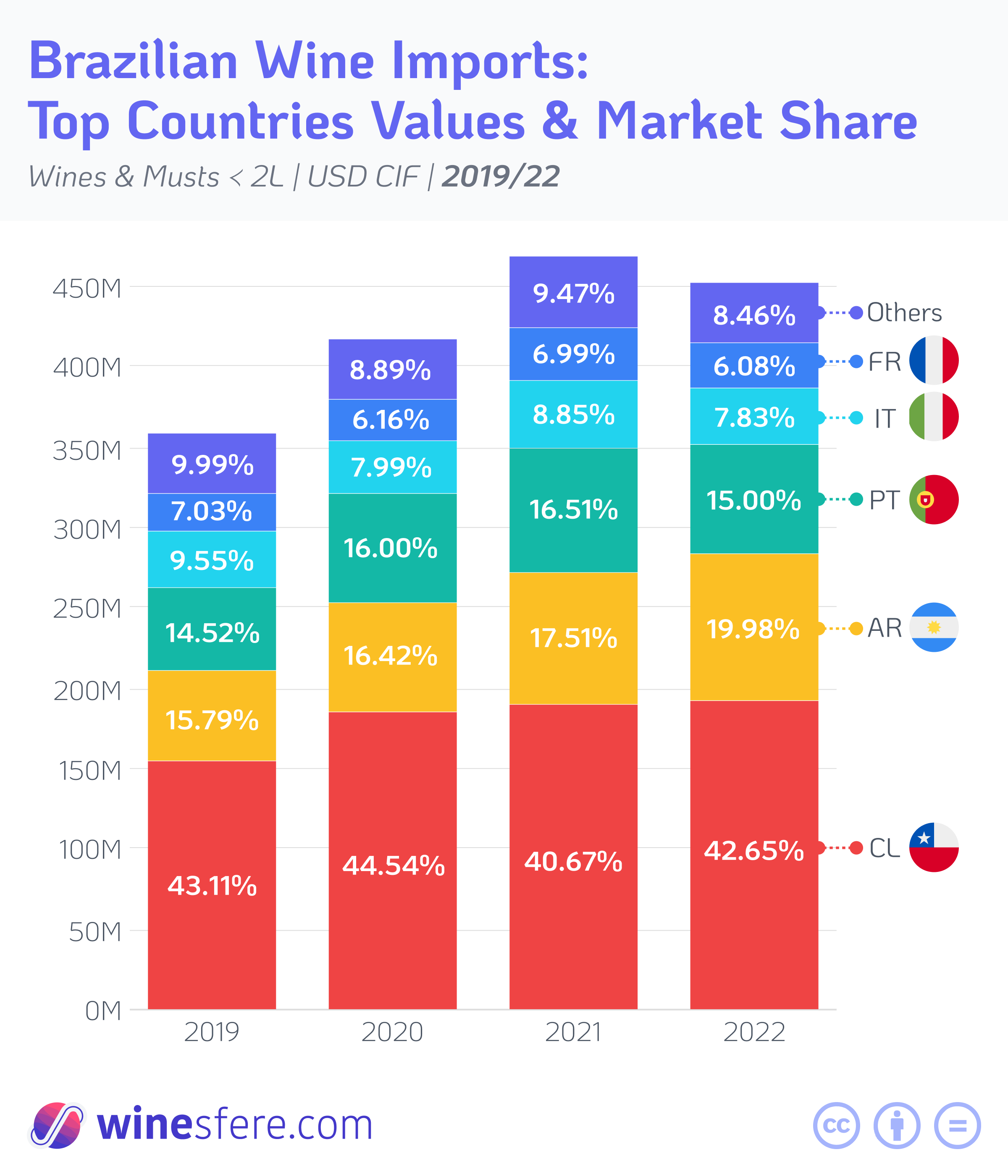Sipping into Success: Opportunities and Trends in the Brazilian Wine Import Market
Dive into Brazil's wine import market trends from 2019 to Jan 2023. Uncover dominant players, premiumization, diversification, market education, and digital channels to stay ahead in this thriving market.

Welcome to Winesfere, your go-to source for all things wine-related! Today, we will explore Brazil's dynamic and evolving world of wine imports. As a rapidly growing market, Brazil offers exciting opportunities for wine producers, importers, and distributors. In this blog post, we'll analyze the data from 2019 to 2022 to identify key trends and market opportunities that can help you stay ahead of the competition. Grab your favorite glass of wine and join us on this journey!
The Big Players:
Brazil's wine import market has consistently grown, with Chile, Argentina, and Portugal leading the way in value and volume. These countries have maintained dominance by catering to Brazilian consumers' preferences and leveraging their proximity and vigorous trade relationships. However, other countries like Italy, France, and Spain also hold a considerable share, offering diverse options to the Brazilian market.
Premiumization on the Rise:
One noticeable trend is the increasing demand for premium wines, as evidenced by the rising average price (USD CIF /Case of 9 Liters) for countries like France and the USA. This suggests that Brazilian consumers are becoming more discerning and willing to pay for higher-quality products. Producers and importers looking to capitalize on this trend should focus on offering premium wines that cater to the evolving tastes of Brazilian consumers.
Diversification and Niche Opportunities:
While the top three countries dominate the market, there's still room for other players to make their mark. Producers from Italy, Spain, Uruguay, and other countries can explore opportunities to diversify the Brazilian market by offering unique wines and musts that cater to different tastes and preferences. Niche segments like organic, biodynamic, or natural wines could be promising areas to explore.
Market Education as a Growth Catalyst:
As Brazilian consumers become increasingly interested in wine, there's an opportunity for producers and importers to invest in wine education initiatives. Hosting tastings, workshops, or partnering with local sommeliers and wine experts can help educate consumers about different wine styles, regions, and food pairings – ultimately driving demand for a wider variety of wines.
Leveraging Digital Channels
The rise of e-commerce and online sales opens up new avenues for wine producers and importers to reach a broader audience in Brazil. By establishing or expanding their online presence, they can showcase their products and provide a convenient platform for consumers to purchase wines.
Brazil's Blossoming Wine Market
After the overview of the dynamic Brazilian wine market, it's clear that there are numerous opportunities for growth and expansion. By focusing on market diversification, empowering consumers through wine education, and harnessing the power of digital platforms, both established and emerging wine producers can succeed in this vibrant landscape. As the wine industry evolves, Brazil's import market will offer an exciting arena for innovation and collaboration. Cheers to the future of wine in Brazil!
Stay tuned for more insights and analyses from Winesfere, and don't forget to follow us on Twitter and Linkedin for the latest updates on wine trends, markets, and trade.



